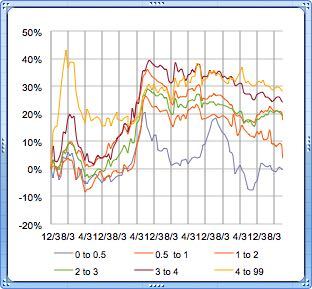ASET Scope – Basics
The ASET (Angular Spectrum Evaluation Tool) is a cut quality assessment scope for round diamonds. Its translucent cone and magnifying lens create a structured light environment which reveal areas of brightness, leakage, and contrast when placed over a diamond.
Note: Visit this page to see how Ideal Scope works, as a prerequisite to learning about ASET.
ASET is like the Ideal Scope but gives more detailed information. It is best for analyzing fancy shaped diamonds, which are more complex than round diamonds.
Wondering which of the many diamond colors is best for you? Our elite list of vetted vendors like Whiteflash and James Allen are experts at listening and helping you determine which combo of the 4Cs is perfect for you - and nicely in budget. Contact Us and get help today.
ASET in Action
The ASET is based on a principle discovered by Kazumi Okuda in the 1970s, further developed by Garry Holloway and Al Gilbertson. The American Gem Society used it as the basis for their patented light performance based cut grading system, introduced in 2005.
PriceScope’s 1-5 star ratings are categorical comparisons with the most thorough, consumer-focused online diamond and jewelry vendors, in categories, we believe reflect our experienced consumer community’s values. Check out PriceScope Jeweler Reviews.
ASET Illustrated
Under bright jewelry store spotlights all diamonds look bright.
The real test for diamond beauty happens under normal and low lighting conditions. Depending on how it was cut, light entering a diamond from above will either reflect and come up to the viewer’s eyes as brightness or escape through the bottom as leakage or windowing, resulting in dark areas with no light return.
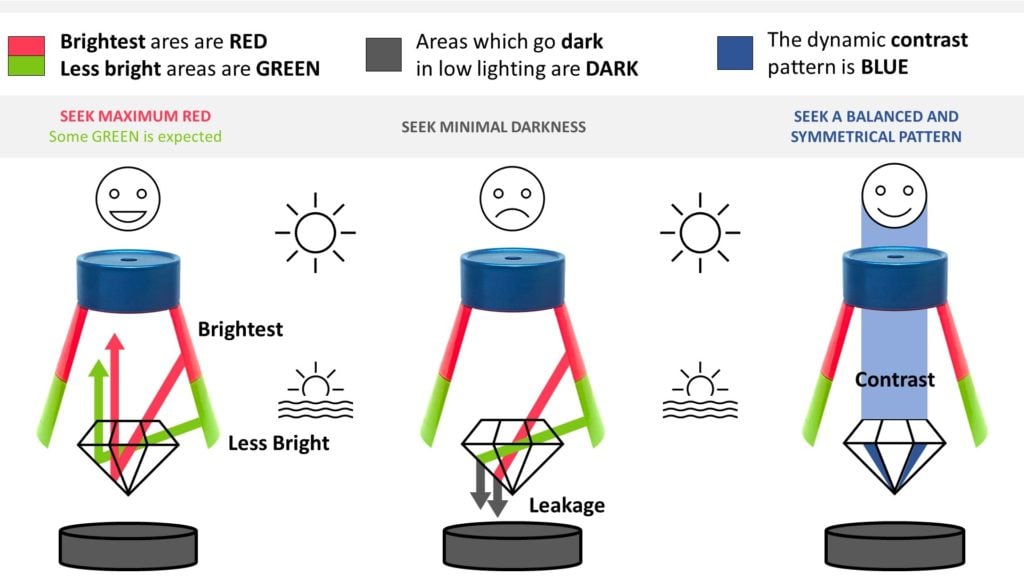
ASET Analysis
Seen in ASET, the most brilliant diamonds have abundant red, accented by tiny green areas (brightness) with minimal darkness (leakage) and a symmetrical pattern of blue (contrast) which resembles a pointed star.
ASET Examples
The first four (left to right) would all receive the “Excellent” cut grade.

- Left example: This is the brightest stone (abundant red areas) with minimal leakage (darkness) and balanced, symmetrical contrast (blue).
- Middle examples: Decreasing brightness (red decreases). Increasing leakage (darkness). Decreasing structure and balance in the contrast pattern (blue).
- Right example: Least bright (more green than red). Most leakage (darkness). Unbalanced, asymmetrical contrast (blue).
Did You Know? ASET is rarely seen in stores because it will reveal deficits in most diamonds. Guarantee your diamond has superior performance with standout vetted vendors willing to provide Ideal Scope and ASET images, including Whiteflash.
Backlit ASET Environments
Leakage Becomes White
While most ASET photo setups use a dark receptacle beneath the diamond (so leakage is dark) it’s possible to use a lighted panel beneath the diamond, in which case leakage becomes white. Similarly, when using the handheld ASET like a jewelers’ loupe – inspecting a loose diamond with nothing beneath it – any leakage will correlate to whatever is behind or beneath the stone.
Suggested Handheld Use
When using ASET like a loupe you can tape a piece of white copy paper to a bright window or table lamp, to create an even, illuminated background for analysis. Doing this also increases the amount of illumination within the cone, such that blue, red and green become better defined.
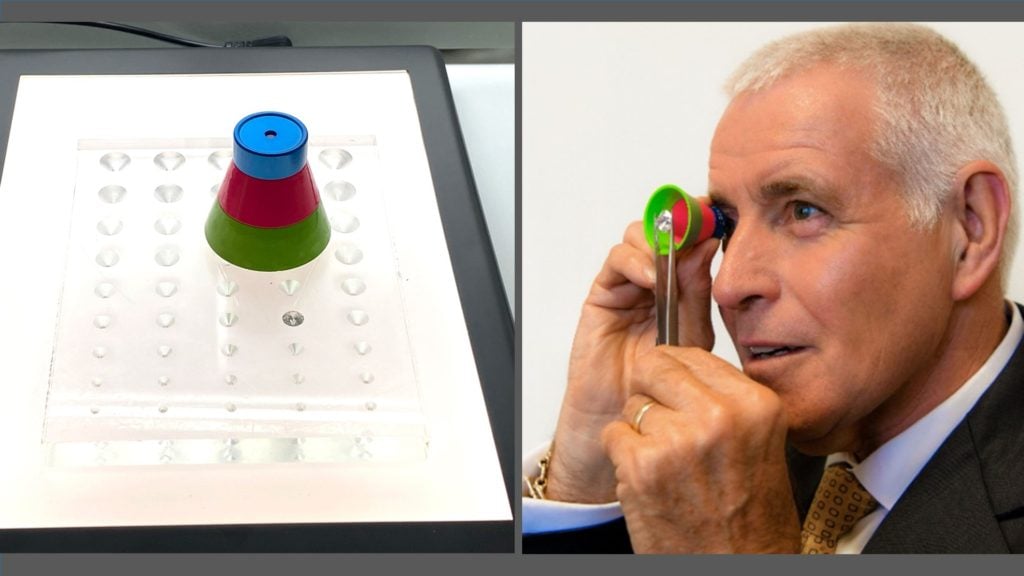
Tilt Fancy Shapes
With fancy shapes: A static face-up ASET image may look great but when you tilt the stone large areas of leakage (white) or unbalanced contrast (too much blue) may appear. It is best to rock a diamond while viewing it with an ASET scope as shown in this demo.
White Leakage: Seen in Backlit Setups
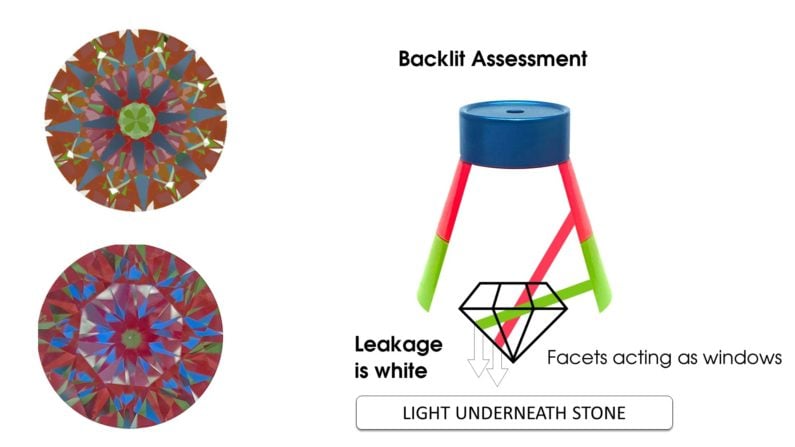
Dark Leakage: Seen in Common Photo Setups
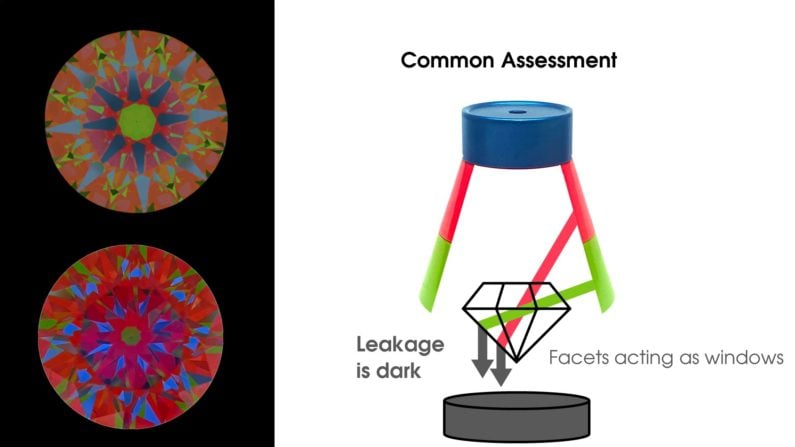
Brightness and Leakage Explained
Depending on the main facet angles, light entering a diamond will either reflect and shoot up to the viewer’s eyes (as brightness) or escape through the bottom (as leakage or windowing). In general terms, brightness is desirable, leakage is to be avoided – with exceptions.
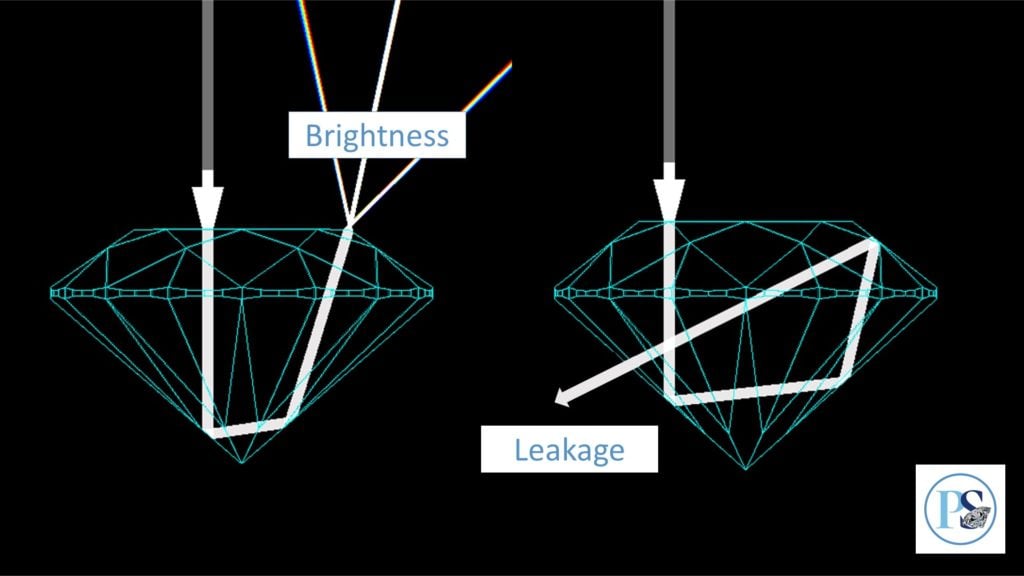
If you’re looking to buy loose diamonds online, use our special tools to reveal the best cut quality diamonds! Start your diamond search and choose from over a million loose diamonds for sale. Use our filters to find either natural or lab diamonds, as well as fancy color diamonds.
Contrast Explained
Some light from above will always be blocked by the viewer, creating a dark pattern. You can see the contrast effect in diamond photos because the black camera lens blocks light the same way a viewer does. The on and off contrast effect is a dramatic component of scintillation when diamonds move, as darkened facets change rapidly to white or colored flashes, then darken again.

Under optimal lighting: When combined with great brightness, a diamond’s contrast pattern drives the vivid “on-off” suite of white and colored flashes we see as sparkle in brilliant cuts. The amount and distribution is key. Generally speaking, a balanced and symmetrical contrast pattern is desirable.
See our Diamond Performance Explained page for more illustrations.

